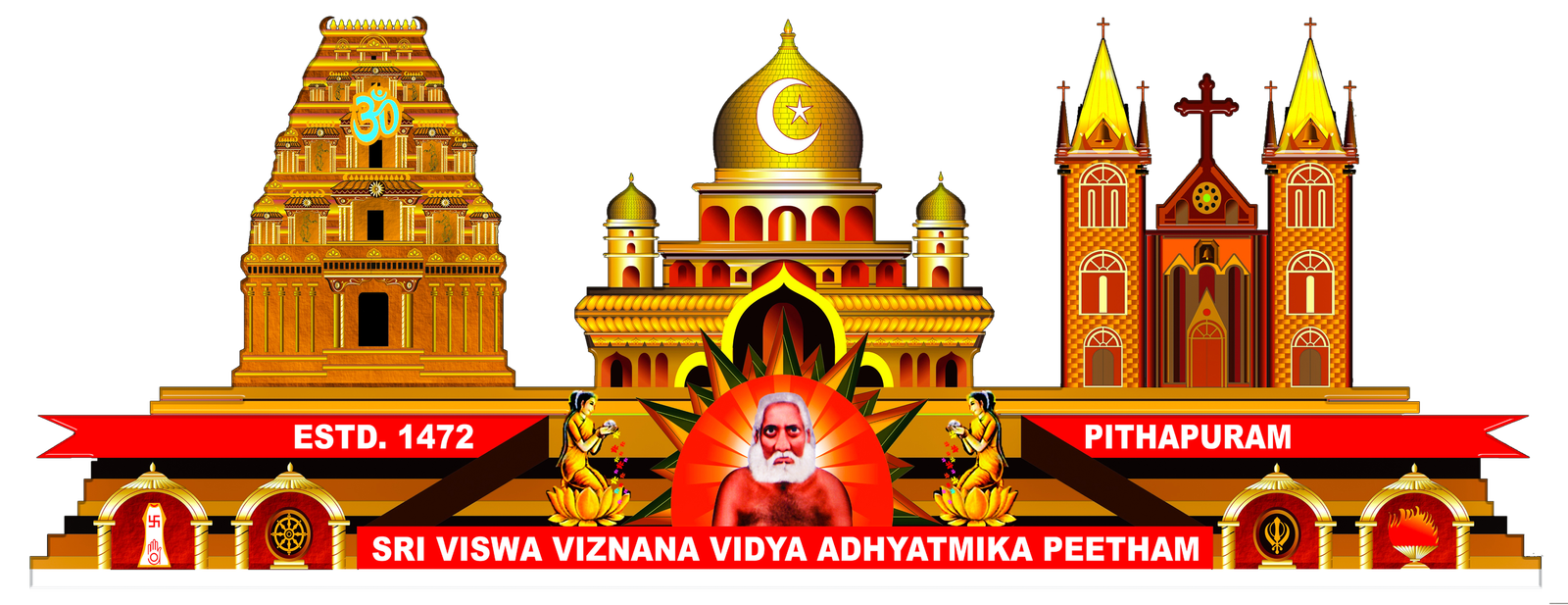Sha Philosophy – Chapter28: BLISS – DESIRE
This world is the complex of five elements. Indeed it is the image composed of Ananda ( bliss ) of God. This is the reason why God made this world to separate from His light. Indeed all these 84 Lakhs ( 8.4 millions ) of types of multitudes of creatures , w hich are created in this world, are composed of Ananda ( bliss ) of God. “ Life “ has evolved into human form ( which is composed of five elements ) from these creatures by ending innumerable births and rebirths in succession. Indeed such a human form itself is the semblance of Ananda ( bliss ) of this creation. The secret in this world is that Divine energy, which is recognized ( manifested ) only in human birth. It is the will and bliss of God that, this Divine energy ( soul ) shall indeed endeavour to reunite with Him. We find a lot of literature written in the view of this subject. In addition to this, commoners and even scholars doubtfully argue and counter argue to know the answers to these questions; “ In God’s creation, why should one creature become food to the other and suffer? Why should human beings suffer from troubles, harassments and grief caused by others ? How will God be benefited by creating all these things?” In this state, without realizing the truth, eons and eons of “ time “ is slipping away.
The word sound, Ananda ( bliss ) reveals a wonderful, precious and profound Truth. Therefore, the creation which is composed of the five elements and consisting of soul is indeed wishing to attain this bliss from the time of its separation from the light of God, by being ultimately transformed into human form. i.e. every moving and non-moving thing, which has life, verily desires to realize this bliss by evolving into a human form. Such a desire to attain bliss itself is bliss of this creation. In this bliss alone all the creatures are enduring troubles, taunting, sufferings, grief and also experiencing comforts etc for realizing the real bliss.
For the sake of bliss alone, one creature is trying to gobble the other. In fact the wish to attain such bliss appears in the form of bounden ( inborn ) desire ( Aasa ). The life ( soul ) in the process of taking gross body in human shape, it has to take gross bodies of different forms one after the other and becoming food to the other creatures. Such a desire to eat the other creature in the form of food is also for bliss. The creature, which became oblation to the other, takes new birth by taking another gross body. In this process ultimately it takes human birth. Therefore, the wish ( desire ) of that creature to obtain human birth in this process of evolution is in fact for bliss only. Till the Jeeva ( soul ) synthesizes in the God, the “ bliss “ will be appearing in the form of desire. So, the endeavour to synthesize in the Rasaswarupa ( Miraculous Brilliant Divine Light ) of Eeswara ( God ) is indeed, for the attainment of eternal bliss. So, the reason for the 84 Lakhs ( 8.4 million ) types of multitudes of creatures of this world to take births after births is indeed for this bliss, which is bound by the desire. In other words, the bliss of “ life “ transforms into the bounden ( inborn ) desire of getting rid of one birth after the other and finally to evolve into human individual. Indeed , such a bliss bound by this desire, woks as an agent till the human life ( soul ) attains the eternal bliss, which originates from the synthesis with the Rasaswarupa ( Miraculous Brilliant Divine Light ). This process of metamorphosis is a wonderful event of God. If this marvellous event doesn’t occur in God, if this world composed of five elements, which is consisting of soul doesn’t separate from God, if that divine light remains as Sthaanu ( immutable ), we would have missed the bliss of perceiving the development of creation, which was separated from the Divine Light as world about 195 crores (1950 millions ) of years back. We would have also missed the bliss of , knowing different ways and wonders of the world from its primordial time in the form of history and visualizing the future events, which will occur. Hence, we may conclude that the strange and most wonderful developments so far happened in this world, which we perceive are indeed in accordance with the blissful will of God. Therefore, it is the cosmic rule of God to separate this world form His light.
The human nature is evolving from time to time in the form of intellectual development by means of comprehension of various aspects of the world by inquiry. The power ( strength of cognition ) derived by human beings during the process of such an inquiry through his inquisitiveness itself is bliss. The “ soul “, which comes into this world in the human form, acquires knowledge throughout its life from the past history and its own experience. In such a state of cognizance , the power of his inborn desire gets invoked . Then in his mind two types of powers in the form of ideas spring up. The first one is pertaining to the desire of worldly pleasures. The second one is the desire to attain the Rasaswarupa ( Miraculous Brilliant Divine Light ) of Eeswara ( God ), which is the esoteric abode of life ( soul ). Indeed, by keeping itself in between these two thoughts, the human soul is longing for the bliss, which is in the form of Aasa ( desire ) only. This is the reason why the Aasa (desire) is becoming the main cause for the human development.
In the view of the aforesaid facts, even if we think over profoundly, we won’t be able to understand, when this world was originated and when will it perish. In the literature, which is in accordance with Vedas we find that, this world was originated 195 Crores ( 1950 millions ) of years back. In the doctrines of other religions, it is said that, this world was created relatively very recently and when will it become dust and perish is unknown. In Upanishads it is mentioned that, after this world is created, so far nine Brahmas ( the deity or the operative creator of the world ), eleven Rudras ( operative destroyers of the creation) and twelve Suns were passed away. However, it is not mentioned that, whenever a Brahma, or a Sun ( who is an embodiment of light ) expires, there is pralaya ( deluge ) or it is Yugasandhi ( junction between the longest divisions of cosmic time or age of the world ).
The soul evolves into human individual in the form of offspring at first through the human individuals known as mother and father. At infancy the baby won’t be able to recognize those individuals to be its mother and father. After the lapse of sometime, as the child grows, at certain age, it can recognize those individuals to be its mother and father. Therefore, it is essential to imply this “ recognition of parents “ to be the Aasa ( desire ). Afterwards, during the childhood, when the child is unable to express its feelings, that is to say, when that child has not yet learnt to speak, indeed it cries with the Aasa ( desire ). Thereafter, while the child gradually starts observing the world, the interest it shows towards the items to which it is attracted, is indeed the Aasa ( desire ). When the child learnt to speak, while it is expressing its feelings, the interest it shows towards the needed objects is indeed the Aasa ( desire ). Subsequently, as the child grows into a human individual, it tries to materialize its ideas to accomplish in mundane affairs. The reason for this is the Aasa ( desire ). As that individual becomes conscious of the changes in the Nature; he continues to go after them in pursuit. This is indeed the Aasa ( desire ).
The childhood is bound by desire. As the childhood passes, man enters into youth ( manhood ) and accordingly his “ desire “ also gets strengthened. In this process, his determinations also become strong and firm. As his volition grows, his mind turns more towards passions. In this situation Aasa ( desire ) associates with his six inner enemies like, lust, anger, greed, enamor, pride, jealousy etc., and arouses his emotions. Thereafter, man is subdued by the vile intentions caused by his six inner enemies and bound by his Aasa ( desire ). The Aasa ( desire ) is completely possessing the man from his youth and spreads its power from within. Such an “ Aasa ( desire ) disturbs ( excites ) his heart ( mind ) with passion and leads him to different course of actions ( vile deeds ).
When the Aasa ( desire ) develops into the form of lust, it transforms the man into an embodiment of lust and drowns him in worldly passions or sensual pleasures and ruins him.
When the Aasa ( desire ) flares up in the form of anger in man, he indulges in torturing others and ultimately when he is defeated by a relatively strong man, he laments with humiliation.
When the Aasa ( desire ) stimulates greed in man, he will be overpowered by the discontentment and covetous feelings and become a miser. That miser dislikes others, swells with pride from within. When his time turns bad, he will sink and lament.
When the Aasa ( desire) spurts out in the form of enamor and appears in one’s own youthful, strong and handsome ( beautiful ) body, he ( she ) wastes his ( her ) time of youth in amorous feelings and gestures. When the time turns bad, and the body appearance changes, he ( she ) will be disgusted, hates himself ( herself ) and develops aversion of his ( her ) life. When that sorrowful event or the time of death comes, he ( she ) laments for his ( her ) condition and dies.
When the Aasa ( desire ) swells in the form of pride, man speaks of him in superlatives to show his own pride and humiliates others. The height of his insolence makes him think that, to be humble is a dishonor and also never allows him to look downwards or bow down his head. Such a proud man can never realize what he does. He can never differentiate between heaven and earth ( good or bad ). In this way he continues to live in an arrogant manner and wastes his life. When his life becomes adverse, he falls like a soaring vulture hit by a tornado.
When the Aasa ( desire ) spreads in the form of jealousy, man disrespects and ill-treats others, who get relatively lower earnings. He can never tolerate others who are in superior position. He can never be peaceful, because at every moment, his envious feelings disturb his mind. Owing to this jealousy , which is in the form of malevolence, man is wasting his life and pining away.
Indeed all the aforesaid aspects of human life are the acts of Aasa ( desire ). If we inquire to what extent the Aasa ( desire ) has driven the man, we can find that; one man has endeavoured to wrap-up the earth like a mat. One man has endeavoured to maneuver the energy of the five elements and also time according to his whims and fancies. One man has tried to annihilate the Rasaswarupa ( Miraculous Brilliant Divine Light ) of Eeswara ( God ). One man has tried to rule the entire globe. One man plans to land on other planets. Some other man imagines to crossover the solar system. In fact all these endeavours are the acts of materialistic desires that consists of bliss.
In fact, “ bliss-desire “ is very great subtle energy ( power ) contained not only by the man but also by all the 84 Lakhs ( 8.4 millions ) types of multitudes of creatures. It is the bliss of the soul bound by the contentment. If there is no Aasa ( desire ) there won’t be any continuity of life and no life can exist. When there is no life, this world , which is composed of five elements, will be a waste. Therefore, there is a very great divine secret in this Aasa ( desire ). An inquiry is made about it only when the soul evolves into human form.
The twig of Aasa ( desire ) of all other creatures prompts them until they evolve into human form. The spirit of perseverance associated with delight brings them unto this stage. The twig of Aasa ( desire ) of the soul that has manifested in human form takes three different directions.
- The Aasa ( desire ) to accomplish bliss in mundane affairs.
- The Aasa ( desire ) to cease the cycle of births and attain permanent bliss.
- Other than the above, the Aasa ( desire ) of the soul, to annihilate the Aasa ( desire ) itself by uniting with its origin, the Virat ( primordial form) by transforming into Rasaswarupa ( Miraculous Brilliant Divine Light ) to become perpetual.
Therefore, man should never forget that there is a real place for him to reach after ceasing the human form, which is exalted among all the creatures. Indeed, the bliss is the main cause for the life to reach so far in the creation, which is bound by Aasa ( desire ) . However, man is unable to know that, he is the embodiment of Aasa ( desire ).
If we question, whether the Aasa ( desire ) is earthly or spiritual, it can be proved in both the ways. The earthly Aasa ( desire ) appears as series of ideas pertaining to mundane objects and the spiritual Aasa ( desire ) as series of ideas pertaining to ceasing of the cycle of births and deaths. However, it is quite natural for the man to follow the earthly Aasa ( desire ) because it readily gives his cherished bliss for the present. Because of this, the man is pursuing the means to accomplish the earthly Aasa ( desire ) only. When the ideas are formed in the volition for the cherished objects, when they are accomplished by the attempts, they should be cognized as earthly ideas.
When we question, to where our ideas can lead us ultimately, it is said that,
Lokambulu, lokesulu, lokasthulu, teginatudikalokambow
Penjeekatikavvala nevvadekakriti velungu natani ne sevintun
-Srimath Bhagavatam ( Telugu ) by Bammera Potana
Meaning : I worship that light, which shines alone, which is beyond that great darkness, which exists beyond all the three worlds, their lords and creation cease to exist ( beyond mind ) is in the Cosmic Form consisting of Miraculous Brilliant Divine Light ( Soul ).
When we say Lokas ( astral worlds ), the ideas are leading us to the Swarga ( Heaven ), which is the abode of Bhuvana ( our world ) and the Brahmanda ( Cosmic Egg or the entire Cosmic Globe, which consists of innumerable worlds ). When we say Lokasthulu ( inhabitants of the astral worlds ), their abode is the Heaven and it is subtle ( spiritual ). Even though the Heaven is subtle, human beings are considering it to be easily attainable by means of mundane actions prescribed by their doctrines. In the common man’s literature, it is portrayed that, whenever a man wants to do away with the sin of his cruel deeds, he requires to perform good deeds like, Annadaana ( donation of food ), Bhudaana ( donation of land ), Dhanadaana ( donation of money ), Kanakadaana ( donation of gold ), pilgrimage and reading, listening and reciting holy texts like Vedas, Bhagavad-Gita, Puraanas ( Scriptures ) and abstract contemplation etc. And the man, who desires to attain salvation, wholeheartedly decides and follows others to perform such mundane acts, by presuming that he can attain salvation by means of such earthly actions. Therefore, the man, who is an embodiment of soul and the seeker of salvation, is earning wealth immorally by committing sins, whichever are possible. Thereafter, he will continue to live in bliss with the desire of acquiring Punya ( Moral Goodness ) by purging away the stains of his sinful deeds by performing the aforesaid rituals like giving donations and reading of holy books etc. But Lord Krishna emphasized in his Bhagavad-Gita that, the aforesaid actions cannot give salvation and the eternity. In case, if anybody wishfully thinks that, the fruit of these virtuous deeds like Daanas ( donations ) is attainable in the form of salvation and perform spiritual journey, at certain point of time his inner self will testify to him that, he is falling into the lowest order of births owing to the fruit of his vile deeds. Certainly, such persons will realize that, this sort of wish is very sorrowful and towards the end they lament.
If you intend to attain synthesis,
. Don’t presume that, it is attainable by the virtue of giving donations etc.
. Recognize that there is a great power called Bhava ( feeling of self or “I” ) within your inner self.
. When your Bhava travels unto Lokasthulu ( the inhabitants of the astral worlds ), you will find the delusion ( illusion ) in the form of a great darkness, which is beyond these astral worlds.
. That delusion, which is in the form of darkness is in-between the astral worlds and Rasaswarupatejas ( Miraculous Brilliant Divine Light ). This spiritual light transcends all.
. Realize that, it is not possible to cut through the darkness of delusion by any of the aforesaid mundane means like giving Daana ( donations ) and other acts.
. Realize that, such mundane acts are improper means for attaining salvation. Indeed they are the ideas, which are influenced by the power of delusion and are bound by the desire. Their end result is, to turn you down into quiescent births.
. Renounce such things; try to find out the alternative means to attain salvation. It is the precept ( initiation or awakening into spiritual path by means Mahamantra or mystic syllables ) of Sathguru ( True Master ), which transcends all the aforesaid virtuous deeds. Then, never look down and drive your Bhava ( feeling of self or “ I “ ) into higher levels of consciousness.
Indeed the semblance of salvation, which is attainable through the aforesaid spiritual practice, is also Aasa ( desire ). There is bliss in this spiritual journey, which is also bound by Aasa ( desire ).
Such as Aasa ( desire ) is spiritual, it is imperceptible and its nature is inexpressible. However, it is possible to realize it in the form of Telisina Sathguru ( Cognizant True Master ).
When you take refuge in such a great Master, if He is really experienced, He will,
. Assist you to realize in your spiritual visions and experience that, how the darkness called delusion leads you into births and rebirths till the end of time ( creation ), what changes it brings to your soul and make you averse to such things.
. Condition you to desire the blissful salvation.
. Teach you the higher spiritual aspects, which are necessary and condition you into a devoted penitent, who is an embodiment of spiritual practice by removing your Aasa ( desire ) of attaining salvation itself.
Then transform you into an embodiment of eternal bliss by transforming your inner self into Him. In other words Sathguru transforms you into attribute-less absolute and makes you transcend the cycle of births and deaths.
Thereafter, you will accomplish such an eternal bliss, which imperceptible, inexpressible and detached from the Aasa ( desire ). The great Master, who can transform you into the embodiment of such an eternal bliss, is indeed Sathguru, the embodiment of the Truth.
In reality the Eeswara ( God ) has created the man ( who is a complex of five elements and soul ) by transforming him into the semblance of Ananda ( bliss ). He is bound by the desires because of the feelings of duality ( Dwaidibhaavas ), which occur in his heart ( mind ) and make him lament. He follows those ways, which lead him into the quiescent births and perish.
In fact, such a man is able to transform the Aanadaswarupa ( image of bliss ), which is latest in him into Brahmaanada ( divine or eternal bliss ) as mentioned above. Then he perceives it in every object and with that contentment he is able to assume the Saayujyarupa ( the true form of synthesis i.e. the Cosmic Form consisting of Miraculous Brilliant Divine Light ) and attain salvation.






